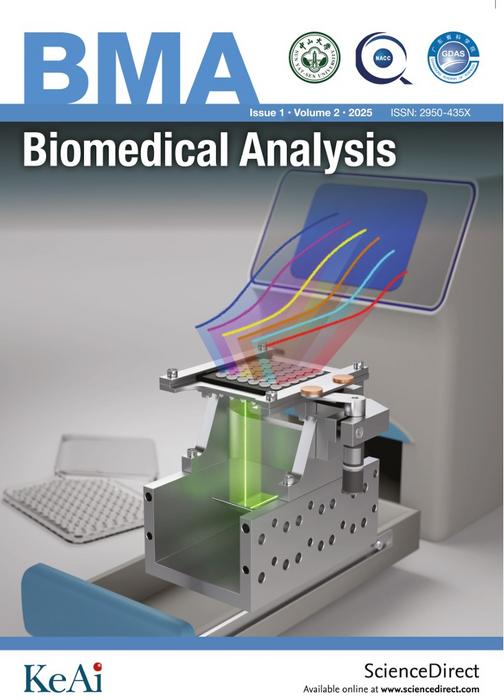The emergence of multidrug-resistant (MDR) bacteria poses a significant threat to global public health and food safety. The continuous and often unnecessary use of antibiotics has paved the way for these "superbugs" to proliferate, leading to the rising incidence of infections that are exceedingly difficult, if not impossible, to treat. Among these resistant strains, bacteria carrying the genes mcr-1, vanA, and blaNDM-1 have garnered particular attention due to their ability to spread resistance through plasmids. This is troubling because plasmids serve as vectors, facilitating the transfer of resistance genes across different bacterial species, ultimately undermining the efficacy of our critical antibiotic arsenal.
Current detection methodologies for these resistance genes tend to fall short, primarily focusing on single-gene analysis, which limits their practicality in real-world applications. These conventional techniques are often characterized by inefficient workflows and lengthy turnaround times, which can delay necessary responses to outbreaks of antibiotic-resistant infections. Understanding the urgent need for more effective testing methods, a team of researchers from the Beijing Academy of Science and Technology Institute of Analysis and Testing embarked on a mission to revolutionize the detection of these critical resistance genes.
Their research, recently documented in the KeAi journal Biomedical Analysis, represents a shift towards a more integrated and efficient approach to diagnosing drug resistance in bacteria. The researchers successfully designed and screened specific primers and probes tailored to detect the aforementioned resistance genes. This innovative methodology not only allows for simultaneous detection of multiple resistance markers, but it also streamlines the process, making it significantly faster and more reliable compared to traditional techniques.
Qiushui Wang, the corresponding author of the study, elaborated on their findings, stating that they established a triplex real-time quantitative fluorescence PCR detection method by optimizing the reaction systems and amplification conditions. Remarkably, validation tests demonstrated a detection limit as low as 10^3 copies per microliter. The statistical robustness of their methodology was underscored by linear correlation coefficients (R²) exceeding 0.99 for standard curves, and both intra- and inter-group reproducibility recorded with relative standard deviations (RSD) below 3%. These figures attest to the reliability and precision of their detection method.
In addition to its high sensitivity and specificity, the triplex detection method proved its value in a practical setting. The researchers tested 42 real-world samples, which included a range of aquatic products, meats, and environmental samples. The method successfully identified five positive samples, with multiple resistance genes detected simultaneously in river water samples, pointing to a significant environmental health concern. The implications of this finding cannot be overstated, as it clearly demonstrates the intersection of food safety and environmental monitoring in the context of antibiotic resistance.
Wang emphasized the need for such advancements in detection technology, particularly in a landscape where traditional antibiotic susceptibility testing primarily examines phenotypic characteristics and often falls short in both speed and comprehensive assessment. This innovative method not only condenses the detection timeline but also enables precise quantification of gene concentrations across a diverse array of samples. This is crucial for public health authorities aiming to monitor drug resistance and implement timely interventions.
The team’s research indicated that their triplex detection system could be employed across varied domains, including food safety, clinical diagnostics, and environmental assessments. A noteworthy observation was the high concentration of the blaNDM-1 gene detected in river water samples, reaching levels as high as 7.94 × 10^2 copies per microliter. This finding raises significant alarm about the potential for environmental transmission of antibiotic resistance, which could have far-reaching consequences for both human health and ecosystem integrity.
In light of their promising results, the research team has ambitious plans for future endeavors. They intend to refine their multi-gene detection systems and broaden their applications in preventing the emergence and spread of drug-resistant bacteria. Their commitment to understanding and combating this critical public health problem signals a proactive approach in the fight against antibiotic resistance, a battle that has been compounded by human actions over recent decades.
Additionally, the study draws attention to the potential use of circular RNAs (circRNAs) as ideal biomarkers for cancer diagnosis and prognosis. CircRNAs offer notable advantages over traditional RNA biomarkers, including enhanced stability, preservation under various conditions, and tissue-specific expression patterns. This hints at a broader application of the team’s technological advancements beyond just antibiotic resistance detection, opening doors for future research into multifaceted health challenges.
The pressing nature of antibiotic resistance in both medical and ecological contexts highlights the importance of continuously evolving our detection and monitoring methods. As the team from the Beijing Academy of Science and Technology advances their research, it becomes increasingly clear that interdisciplinary approaches, integrating fields from molecular biology to environmental science, will be essential in tackling these urgent issues.
In conclusion, the innovative triplex real-time quantitative fluorescence PCR detection method developed by the Beijing Academy of Science and Technology team is poised to make a significant impact on our capability to detect and quantify drug resistance genes. The remarkable sensitivity and speed offered by this methodology could transform how we respond to antibiotic resistance in both clinical settings and environmental contexts. As society grapples with the consequences of antibiotic misuse, research like this underscores the importance of innovation in developing tools that empower us to uphold public health standards and safeguard food safety.
Subject of Research: People
Article Title: Establishment of a triplex real-time quantitative fluorescence PCR method for detecting drug resistance genes mcr-1, blaNDM-1, and vanA
News Publication Date: October 2023
Web References: DOI
References: None
Image Credits: Jie Deng, Rong Guo, Qiushui Wang, Yue Liu, Lijuan Gao
Keywords: Antibiotic resistance, drug-resistant bacteria, PCR method, mcr-1, blaNDM-1, vanA, environmental health, food safety, molecular biology, biomarkers




